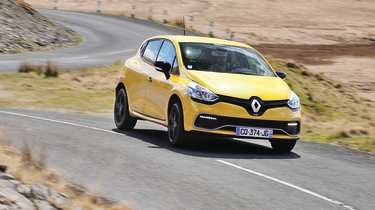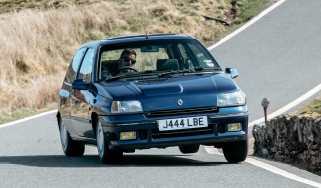Renault Sport Clio 200 Turbo – the car world's greatest misses
This misguided departure from the French brand’s hot hatch heritage saw the Clio fall from grace

'The trouble was,’ said my interviewee, with a charismatically thick French accent and more than a wry smile, ‘we spent all the money on the old car…’
We weren’t meant to be chatting about hot Clios, but our man knew about them better than most – I’d just better not drop him in it here – and the conversation had strayed onto one of the most controversial cars ever to wear the now-defunct Renault Sport badge: the final, turbocharged Clio RS of 2013.
I had always wondered what those on the inside really thought of the 200 Turbo. At the time, Renault said the model was aimed at broadening the market appeal of the firm’s hot hatches, which seemed a dangerous sentiment. Broadening appeal smacks of trying to have one’s cake and eat it, especially so in this case, as the previous Clio RS was a bona fide evo icon, a car whose gunslinger‑esque shadow still looms large over the hot hatch market to this day.
> Renault Sport Mégane R26.R (2008 - 2009): Dieppe's finest hour
What he was really saying was that in the increasingly bean-counter-led modern car industry, the idea of spending a small fortune on a ‘cheap’ car to make it as bespoke as the earlier Clio 197/200 had been was about as welcome as the notion of unveiling one with a turbodiesel lump in the nose. Whoever signed off on the 197 project was either a passionate enthusiast, brave or crazy – or perhaps all three.
I ran one of the very first 197s as a long-termer and I was besotted with it. Those early cars weren’t perfect, but I simply couldn’t believe what you got for such an entirely reasonable price tag: a screaming naturally aspirated engine producing just shy of 100bhp per litre, those bespoke wide-arch panels, a working rear diffuser. It felt like a little jewel in your hands; I never felt like that about the 200 Turbo.
Let’s be clear: like the subjects of many of these Greatest Misses pieces, the 200 Turbo wasn’t a bad car per se. It was fast, well equipped, covered ground ably, and was far better at long journeys than the old car. If you weren’t really fussed about driving, or cars, it was – and I cringe to say this – an improvement. But that’s not the point, is it?
Although Dickie Meaden was generally positive on the car’s European launch (evo 182), despite misgivings about the engine and auto ’box (no manual was offered), by the time of the UK group test (issue 184) the car slumped to fourth in a five-car test. To quote David Vivian in the conclusion: ‘From hero to zero. It almost makes you want to weep.’ Ouch. The Mk7 Fiesta ST won the test, by the way, and you know how many they went on to sell of those.
The turbocharged Clio did get better. In 2016 the 220 Trophy model offered more power and the firmer Cup chassis as standard, but the essential flavour of the car remained. Arguably the stillborn RS16 version, with its 271bhp Mégane RS drivetrain – manual gearbox included – and chunky arch extensions, could have added some much-needed gloss, but it had to step aside for the imminent Alpine A110. They weren’t allowed to make both, and they surely made the right decision within those imposed restraints.
That new icon arrived soon after, and I, like most, never gave the 200 Turbo another thought.
This story was first featured in evo issue 326.




